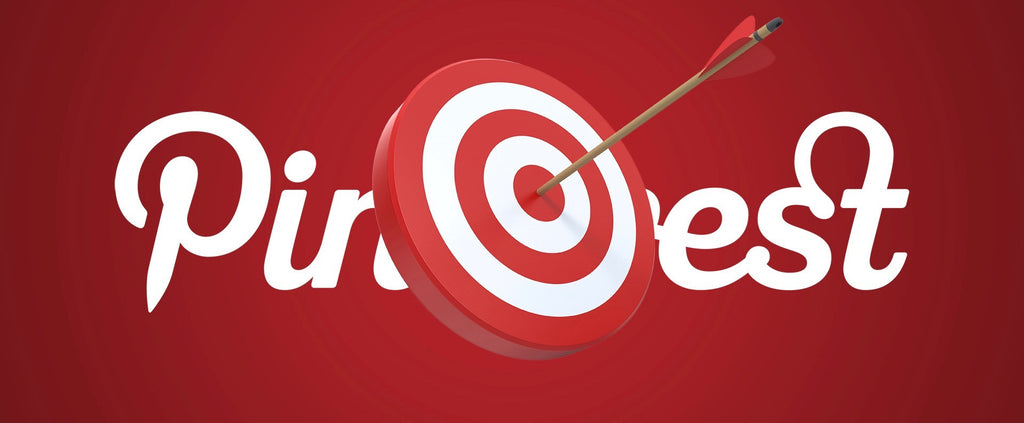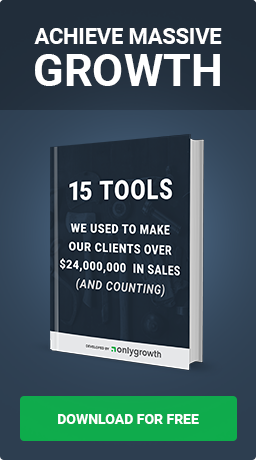Your Guide to Profitable Pinterest Marketing, Part I:
Aug 25th, 2016

Using Rich Pins to Improve Social Media Conversions and Generate more Sales
Note: this is Part 1 of our two-part guide to content-rich Pinterest marketing. For the second post, containing more actionable strategies and best practices, click here.
Clients often ask us about using Pinterest for ecommerce. Namely, they want to know if it's worth promoting their brand on that platform, in addition to Facebook and Twitter.
Our answer is always the same – it depends on your audience. Maintaining a presence on a social media site just because it's popular is a waste of time. On the other hand, if your potential buyers hang out on Pinterest, we say go for it.
But in case that answer is too broad for you, today we are going to properly dig into the subject of generating sales through Pinterest. We will do our best to answer how profitable Pinterest marketing can be for your ecommerce brand (hint – very), and how you can make the most of it with simple and cost-effective strategies.
We'll start with some thought-provoking numbers.
Back in 2014 Shopify did a study about the impact of social media on ecommerce sales. They analyzed over 57 million social media visits and 529 000 orders that came from said visits.
From that mountain of data, some truly compelling findings emerged. We will emphasize 3 of them:
- According to Shopify, Pinterest is the 2nd largest source of social traffic for ecommerce brands – at least the ones using their platform.
- On average, Pinterest visitors buy more stuff – the average order volume is $58.95, beating out Facebook at $55.
- Finally, in the period from Q2 2009 to Q3 2012, the volume of orders that came from Pinterest users maintained an impressive growth of 79% per quarter.
Finally, Pinterest has one major advantage over bigger social network: 'pinned' content has a much longer lifespan.
On Facebook and Twitter, it takes just 3-5 minutes on average until a post becomes buried in the news feed. Pinterest doesn't have that problem. Boards can be viewed by users at any time in their entirety.
In fact, a study by Piqora discovered that pins drive the most traffic after 3.5 months into their lifespan! For social media, this is as close as you can get to evergreen traffic.
Apparently, exploring Pinterest has become so synonymous with shopping that the website itself wants to implement a "Buy" button in the foreseeable future, and let people order directly through Pinterest. This only adds to the list of reasons why you can't ignore this trend.
Bottom line is, lots of ecommerce brands show consistently impressive results by promoting their products on Pinterest. The kind of results that mean this isn't a fad, but a legitimate marketing channel that's free, sustainable, and offers lots of potential for customer acquisition.
And hands-down the best way to make the most out of Pinterest marketing is by using rich pins. In this post, we are going to look at how you can do that, and what you need to get started.
But first, let's get the big question out of the way...
What are rich pins, and why should you care?
Rich pins are regular Pinterest pins, but with extra information that helps people to learn what they are about. For an ecommerce brand like yours, this means that pins of your products will have descriptions, pricing, availability and other information on display, as opposed to just a picture and an item's name.

This is a regular pin – not much is happening on the page

This is a rich product pin, which is more buyer-friendly
In the screenshots above, you can clearly see how a regular pin loses to a rich pin in terms of appealing to potential customers. Let's break down why they win.
For starters, rich pins are more discoverable (keywords from products descriptions are searchable), and therefore more attractive to Pinterest users. They can also be featured on a special Pinterest-curated board.
Rich pins also feature a direct link to your product page. Nothing could be easier than seeing a cool item on Pinterest, clicking that link and ordering it online (impulse buyers beware!).
With rich pins, your product's price is dynamic. When your listings change, so does the pin. And it's done in a smart, attention-grabbing way. Case in point:

Most product pins also display whether the item is in stock or not (see the screenshot above). But here's the best part – your potential customers don't need to check out the pin to know about changes in price or availability. Pinterest automatically notifies users by email when that happens!
And by "users" we mean not only those who pinned your product in the first place, but anyone who repinned it for themselves. These people might have never visited your website, or even heard of your brand. Through Pinterest, they will – and you'll have an opportunity to get new customers.
To sum up – rich pins are easy for customers to find, very buyer-friendly, and help your products reach a lot more people. But how can you begin to implement them for your brand?
Implementing rich pins for your ecommerce brand
By now you must be wondering how to make your online store support rich product pins. If you are using a third-party ecommerce platform like Shopify or Etsy, chances are that you have rich pins enabled by default.
Everyone else will need to do a bit of work. You need:
- a Pinterest business account;
- some way to insert correct markup into product pages;
- patience.
If you have a personal Pinterest account instead of a business one, make sure to convert it first.
Now you are ready to take care of the technical side of things. First, you need to tinker with your website to make sure that every product page has the correct markup and can be turned into a rich pin. This is less tricky than it sounds, and Pinterest has a great guide on the subject.
There are two ways to implement rich pins for your website: through simple meta tags and through oEmbed endpoints. How you choose to go about it depends on your developers, your ecommerce platform, and a host of other things.
Explaining all of this here would stretch way beyond the scope of this guide. If you feel overwhelmed and want some help with that, contact us and the team at OnlyGrowth will happily give you a hand.
Anyway, let's assume that you have made all product pages on your site capable of rendering as rich pins. What remains is the easy part – getting Pinterest to confirm that your rich pins work as intended, and recognize them as valid.
To do so, go to a special validator page on Pinterest, and enter a URL for any of your product pages. From the same page, you can apply to get your rich pins approved.

Here's a sample of what the validation / application process looks like.
Congratulations – you did it! It will take up to several weeks to get your website approved for rich pins. But once it is approved, you will take your social media marketing to a whole new conversion-friendly level.
Pinterest is one of the fastest-growing social revenue channels for ecommerce brands, and you have just done the most important 20% of the work that will be responsible for 80% of your results with Pinterest marketing.
As useful as rich pins are by themselves, they will work much better in combination with a great Pinterest marketing strategy, which we will discuss in the next post.
See you in Part 2!
If you aren't using Pinterest marketing to grow your ecommerce brand, we recommend that you try it – at least as an experiment. Starting is easy, and there are a lot of unlikely companies that enjoy a steady stream of social sales from that platform. Who says you can't be one of them?



